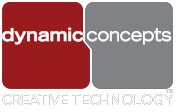Open Source Myths
There are a lot of misconceptions about open source software (OSS) in terms of its price, when it can be used, and whether it’s a good fit for businesses.
Are open source solutions for small stores?
Can open source solutions like WooCommerce scale for large businesses? Of course — “scaling” software doesn’t matter whether the software is open or not.
And in fact, if you do run into areas that need optimization, at least you’ll have control over the source code to make potential improvements with an open platform vs. one where you don’t have access to the code that runs it.
Here are some benchmarks that WooCommerce can hit:
- Up to 5 orders per second
- That’s 20,000 orders per hour, and about half a million per day, if your store can sustain that rate for more than a flash sale
- 4,000 – 6,000 concurrent shoppers on the site
Is open source software free or cheaper to use?
Open source software is often referred to as “free” software. This term means free as in freedom, not price — open source software gives users maximum freedom in terms of usage and flexibility.
While open source software is often lower cost than proprietary software, there are other costs to using it, such as hosting or developer time. When using open eCommerce platforms, you may pay for other “responsibilities” that a proprietary platform would absorb, such as hosting or support services.
Is OSS harder to use than proprietary software?
Nothing about software being “open” makes it inherently harder to use. Rather, most difficulty related to OSS comes from self-hosting that software – using or renting your own hosting service vs. using one the software author provides.
When you self-host, you’re running your own “instance” of the eCommerce software. This allows you to benefit from the flexibility OSS affords, since no one else has control over shutting off or modifying your store. However, this means knowledge of some technical skills are required.
Open Source Strengths
Data Ownership
You own your content, data, images etc… and have the freedom to move from one hosting company to another. That’s why “Freedom from vendor lock-in” was the #1 reason companies chose OSS in 2016.
Security & Code Quality
“Quality of solutions” is the #2 reason companies choose OSS. Open software is typically higher quality than proprietary systems.
Commercial software typically has 20 to 30 bugs for every 1,000 lines of code…The study identified 0.17 bugs per 1,000 lines of code in the Linux kernel
– Source: Carnegie Mellon + Stanford University studies
Flexibility & Freedom
The “Ability to customize and fix” the software is the #3 reason companies choose OSS. Not only do you have freedom in terms of usage, but you also have freedom in terms of the codebase.
Interoperability
With WooCommerce and other open solutions, interoperability is unparalleled. Because the source code and access is open, there are often pre-existing integrations with other services, or they can be built. Need to work with a niche payment or shipping provider? A solution may already exist; and if not, it can be built.
Community
Forums, groups, documentations and resources that are contributed by the community to support the platform.
Open Source Weaknesses
Where are open source platforms weak? In terms of responsibility — while they afford users amazing flexibility and freedom, this comes at a price: The user is responsible for the site, maintenance, and setup. To take full advantage of an open source platform requires the user to take ownership of their site instance that runs the platform.
Setup and Configuration
Sourcing a hosting platform, setting up a domain name, and getting the platform installed are all barriers that need to be crossed before the store is ready. However, many hosting companies will provide pre-installation setup for open source platforms like WordPress.
Optimization
Proprietary systems optimize their own hardware and software stack for merchants — caching configuration and performance tweaks are built into the platform. For Open Source, hosting companies and developers should focus on quality hardware, intelligent caching, and other performance enhancements that aren’t “out of the box” to provide great eCommerce experiences.
Maintenance
When using a proprietary system, “maintenance” is built in and owners don’t have to worry about security patches, compatibility changes, or regular updates. For Open Source systems, maintenance is part of the owner responsibilities to insure compatibility and security.
-Source and Written by bekarice on November 29, 2017 Blog.
